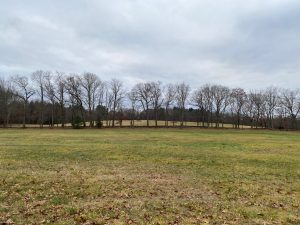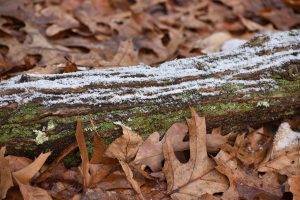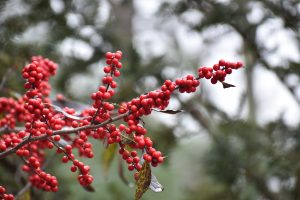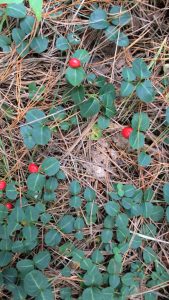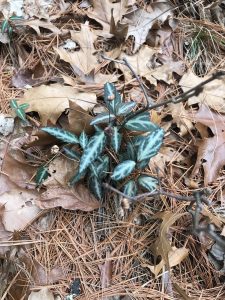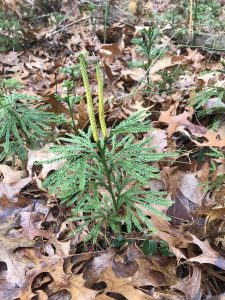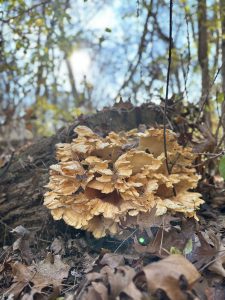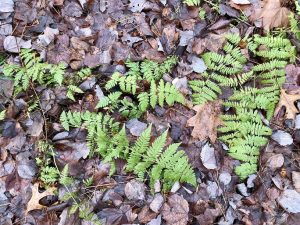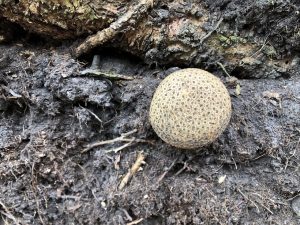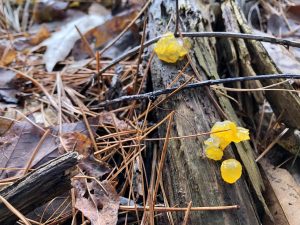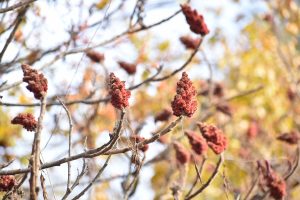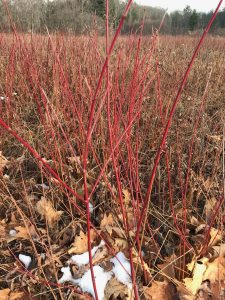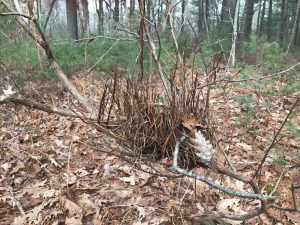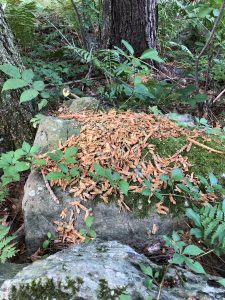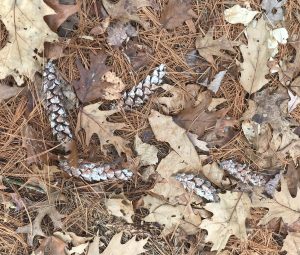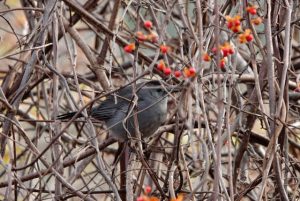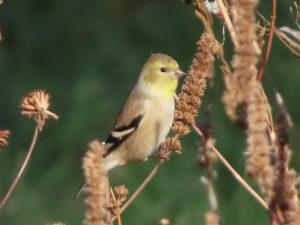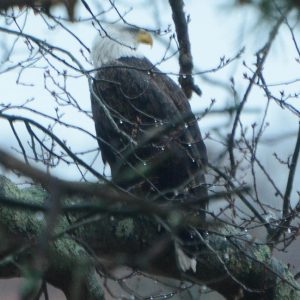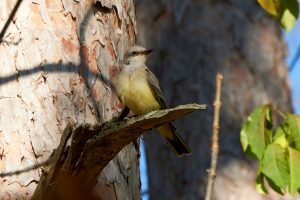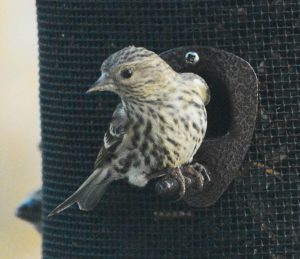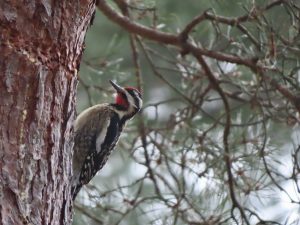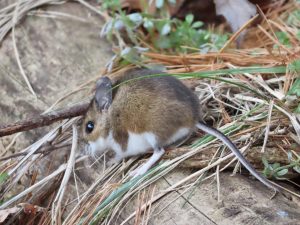Written by Gwyn Loud for the Lincoln Land Conservation Trust. She welcomes your sightings and questions at 781-259-8690 or gwynloud555@gmail.com
On December 21, the winter solstice, we shall officially welcome the new season, with the shortest amount of daylight in the year. Thereafter, the hours of daylight will gradually increase. The weather has been varied over the past month, with the temperature getting to 66℉ on November 17 but many hard frosts since then and daytime temperatures in the thirties and forties. We have had periods of rain and just one brief dusting of snow. Ponds were covered, or nearly so, with a thin layer of ice until the latest warming trend and heavy rain. Climate change is impacting snowfall and, to quote an article in the Boston Globe writing about a new study published in the journal Climate, “Massachusetts, Rhode Island, and Connecticut have each seen staggering losses in snow cover since 2000, with Massachusetts losing roughly 27.5 days of snow cover, and Rhode Island and Connecticut each losing more than 30. In this region, precipitation amounts in winter have not declined much — and in some cases have increased. But instead of snow, it is falling as rain. The shift of just a few degrees is all that’s needed to turn a snowstorm to rain, and between rising global air temperatures and the extreme warming in the Long Island Sound and the Gulf of Maine, that temperature shift is already happening……Besides contributing to additional warming, decline in snowpack can wreak ecological havoc — forcing beloved species to expand their ranges northward in search of cooler temperatures and bringing pests, like ticks, to areas that did not used to have them. It can devastate industries spanning from maple syrup to skiing, make pond hockey and ice fishing a thing of the past. It can upend weather systems and trigger effects that aren’t yet understood.” To read the full article, see link at the end of this column.
Gardeners should take note that a few weeks ago the US Department of Agriculture released a new map of plant hardiness zones, the first revision since 2012. Due to warming climate, most of Massachusetts now falls into zones 6 or 7 rather than cooler zones 5A or 5B. The zones are determined by average low temperatures and tell farmers, gardeners, and landscapers whether specific plants are likely to survive the winter climate.
The colors of the landscape are muted now, with browns and grays predominating, offset by the greens of conifers and lawns. At this season the forest floor reveals patches of color in plants such as spotted wintergreen, partridgeberry, and a few ferns, such as Christmas ferns, which stay green all winter. Club mosses, very ancient plants reproducing with spores rather than seeds, look like miniature pine trees with yellow spore cones on stalks, resembling candles. Fungi, moss, and lichen are all worthy of our attention as we walk in the woods. If you come across an odd cluster of twigs in a shrub or tree you have found a “witches’ broom”. This deformity has several causes, such as disease or fungi, and results in changing the plant’s structure to create a dense mass of twigs looking like a bird’s nest or broom. In shrubby fields, red osier dogwoods display beautiful red stems.
White pines produced a bumper crop of cones this fall, which seems to be a “strategy” to ensure new pines will sprout, as wildlife cannot possibly eat all the seeds. The two seeds at the base of each scale on the cone are food for many birds and mammals and sometimes you find a pile of stripped cones after an animal has had a feast. Two or three years with few cones will follow a big mast year like this one. The cones we see are female cones; the male cones are much smaller and inconspicuous, releasing clouds of pollen which we notice in the spring.
Warm spells may account for various migrating birds lingering into November and December. Examples from Drumlin Farm include an orange-crowned warbler, an American redstart, a killdeer, field sparrows, chipping sparrows, turkey vultures, a Baltimore oriole and large flocks of red-winged blackbirds (a birder counted one flock of 340!). Most gray catbirds, pine warblers, Eastern towhees and hermit thrushes go south, but a few individuals always make it through the winter. Likewise, a number of robins and bluebirds will stay with us, switching their diet to berries, with bluebirds also liking the suet and dried mealworms some of us provide. Great blue herons and belted kingfishers will linger here as long as there is open water where they can find fish. A very unusual sighting at Drumlin Farm on Nov. 19 was of a Western Kingbird, one of only three found in the state in 2023. Its summer range is from Texas to North Dakota and west to the Pacific and by now it would be in its wintering grounds of Mexico or Central America.
Other recent bird sighting of note include yellow-bellied sapsuckers, a fox sparrow, a flock of snow burnings, and a rusty blackbird. Bald Eagles were spotted near Farrar Pond and Flint’s Pond and other raptors seen were Merlins, an American kestrel, Northern harriers, and a red-shouldered hawk. Red-tailed hawks are common here year-round. Will Leona, one of the Conservation Department’s land stewards/rangers, wrote, “Red-tailed hawks have been enjoying our field management. Every time they hear the tractor or brush mower, they come from all around for the lunch buffet of voles and mice.” At least fourteen mute swans continue on Farrar Pond, and common mergansers, hooded mergansers, and ring-necked ducks have been observed on other ponds. Great-horned owls are calling frequently.
The annual Winter Finch Forecast from Ontario predicts the population of birds of the boreal forest, and whether a shortage of food will cause various species to move south to New England. This year pine siskins and purple finches (easy to confuse with house finches) have already turned up in Lincoln and we should be watching for white-winged and red crossbills. Red-breasted nuthatches or evening grosbeaks are unlikely as they will have plenty to eat in Canada.
Many people who maintain bird feeders are wondering “Where are all the birds?” There is no clear answer, except we know that song birds in general are in decline. I am hoping that mild fall weather and a good mast year has meant birds have been finding plenty of wild food. I am cautiously optimistic that a real snowfall will push the birds back to our feeders. We’ll see. Lincoln, as part of the Concord Circle, will once again take part in the Christmas Bird Count, which will be held on Dec. 31 this year. Residents who would like to be part of a field team that day should contact Norm Levey at norman.levey@gmail.com and those who would like to count birds at your feeder, please contact me.
Chipmunks have now gone below ground for the winter, not in full hibernation, like woodchucks, but to sleep with periods of wakefulness to eat from their food stores. Gray and red squirrels are very active, and Carol Roede picks up busy small rodents such as mice at night on her trail cam. She also watched footage of a bobcat, coyote, deer, gray fox, and red fox using her driveway at night. A Weston Rd. resident wrote, “a handsome, incredibly muscular buck with a rack ran across Silver Hill Rd. and leapt easily over the fence surrounding the field, then he literally soared to the other side of the field, gliding effortlessly over the fence there- truly breathtaking!” She also saw a fisher near Beaver Pond.
As this is my final wildlife column of 2023 I would like to take the opportunity to thank my “official team” of wildlife observers: Ryan Brown, Stacy Carter, Vin Durso, Marcia Gagney, Michele Grzenda, Nancy Hammond, Sue Klem, Jane Layton, Will Leona, Norman Levey, Kathleen Lomatowski, Ron McAdow, Harold McAleer, Ellen Meadors, Corey Nimmer, Tia Pinney, Carol Roede, Nancy Soulette, Pam Sowizral, Rob Todd, and Robin Wilkerson. I am also grateful for the calls and e-mails from other observant townspeople who appreciate the many forms of wildlife around us. Thanks go as well to Miranda Loud for proofreading and to Bryn Gingrich who puts the column on the LLCT website, along with photos.
I wish all readers a happy holiday season, with ongoing enjoyment of the natural wonders around us in 2024.
Links
To read more about winter disappearing in Southern New England
Revised plan hardiness zones from the USDA for Mass.


